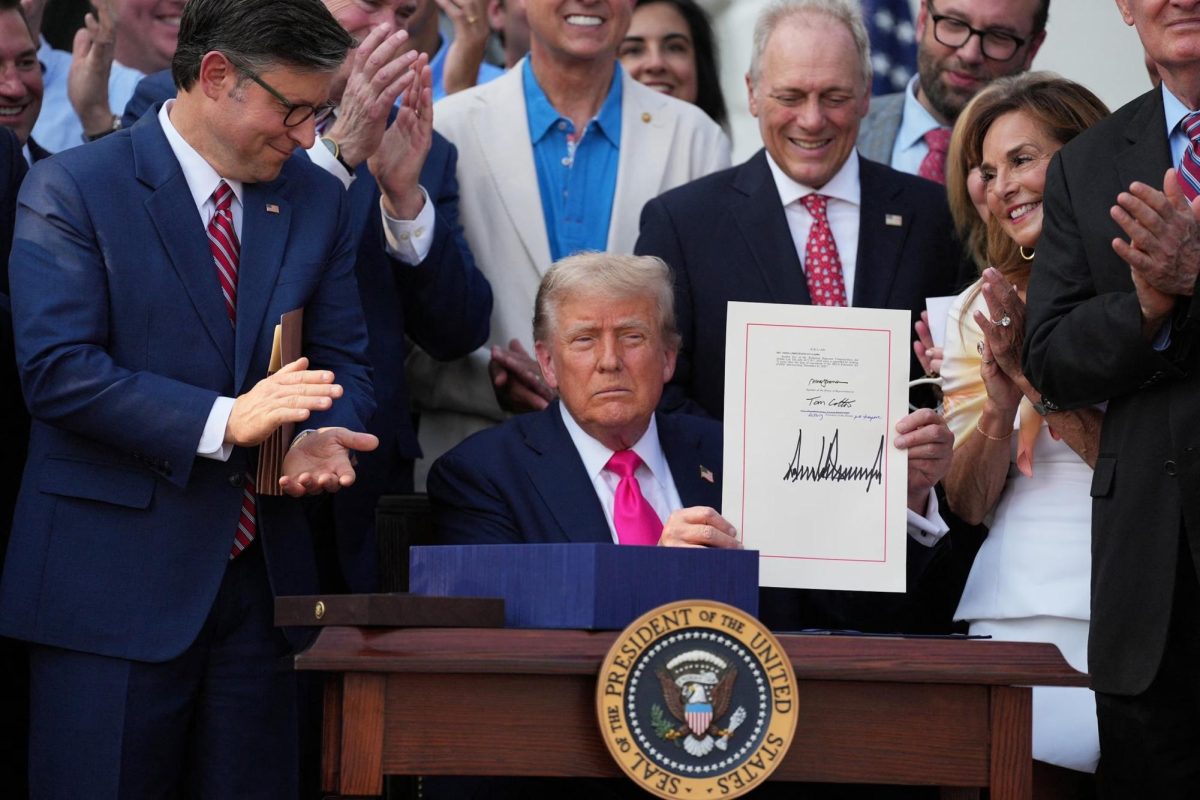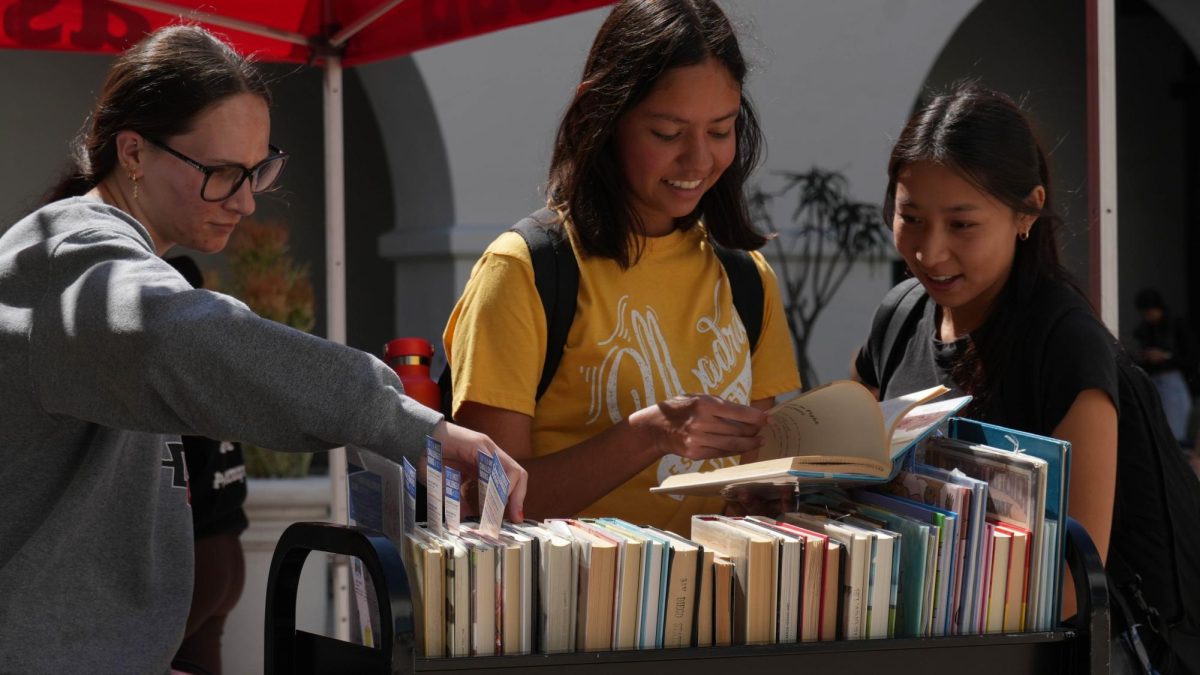Signed into law on July 4, the One Big Beautiful Bill Act is the “largest middle- and working-class tax cut in U.S. history,” according to The White House.
The new budget bill raises the debt ceiling by $5 trillion and will increase budgets for both the military and immigration enforcement. To extend President Trump’s 2017 Tax Cuts and Jobs Act, and further decrease middle- and upper-class taxes, cuts will be made to various social welfare and clean energy programs.
For the 28% of undergraduates and 61% of graduates who borrow federal loans, they may want to take a look at upcoming borrowing and repayment changes as a result of the “big, beautiful bill.”
Fewer repayment plan options
Income-based repayment programs, including Saving on a Valuable Education (SAVE), Income-Contingent Repayment (ICR) and Pay As You Earn (PAYE) plans, will be phased out throughout the next year. Borrowers who are currently using these programs will have to switch to the Standard Repayment Plan or the Repayment Assistance Program (RAP).
While new borrowers will only have access to the latter two programs, those who have previously borrowed under the former three plans will have until July 2028 to switch into the new ones, according to Forbes. Those using the Income-Based Repayment (IBR) plan do not have to switch. Those who do not make the switch will automatically be placed into the Standard Repayment Plan with fixed monthly rates and a timeline of 10-25 years.
The new RAP is based on one’s adjusted gross income with a minimum monthly payment of $10 and a maximum term of 30 years, according to Forbes. Under RAP, it takes longer for borrowers to qualify for forgiveness.
Loan caps for undergraduates
Stafford loans, also known as Direct Subsidized and Direct Unsubsidized loans, will remain capped, with maximums varying depending on the education level. However, Parent PLUS loans, typically borrowed by parents of dependent undergraduates, will now have a lifetime cap of $65,000. Furthermore, any parents who re-borrow from Parent Plus after July 2026 could become ineligible for income-based repayment plans or forgiveness, Forbes reported.
While it is still at risk of restrictions by the Trump administration, the Public Service Loan Forgiveness program is still intact. This program is the most common method of student loan forgiveness.
According to the Education Data Initiative, the average undergraduate student borrows $31,960 to complete their degree. Currently, federal student loan debt is sitting at around $1.7 trillion, with this number steadily increasing at around 1.8% each quarter since the start of 2020.
Loan caps for graduate and professional students
Future graduate and professional students will, arguably, see the greatest changes in their options.
The One Big Beautiful Bill Act eliminates the Graduate PLUS program, and students will only have the option of Stafford loans. The lifetime cap for Stafford Loans has been increased to $100,000 for graduate students and $200,000 for professional students, such as those in medical or law school.
According to the Association of American Medical Colleges, the median cost of a four-year, in-state medical school is $286,454. For private institutions, this number skyrockets to a median of $390,848.
For law students, the total average cost is $217,480, according to Education Data Initiative.
According to Forbes, “Critics have argued that some prospective students may turn to riskier private student loans, or decide against going to medical or law school altogether, which would make existing shortages in high-need areas (like rural hospitals) even worse.”
Professor thoughts
Jonathan Graubart, chair of the SDSU political science department, worries that the bill will not only make education less affordable, but that it will also decrease education quality.
“There’s going to be a bigger demand to teach more and more students and to make it almost like a factory in terms of just churning out students versus really trying to produce high-quality, interactive education,” Graubart said. “So, the staff and lecturers have it the worst, then the faculty, and obviously it all rebounds in multiple ways to the detriment of students.”
He attributes some of these cuts to pre-existing higher education budget issues in California and recent cuts that his department has already had to make.
“If you’re cutting back federal aid to crucial things like health care with Medicaid and food stamps, that means there’s more of a drain on state budgets,” Graubart said. “And so, education, including higher education, is going to take a further hit.”
Both Graubart and his colleague, political science professor Brian Adams, agree that the funding will not only take a hit from provisions directed at education, but also from other facets of the bill.
“For many, many decades, the United States was seen as having the best higher education system in the world,” Adams said. “I taught for years in China. I taught for six months in South Korea. It was certainly the perception of both of those that, if you want to get a really good college education, come to the United States. The Trump administration, by being hostile to foreign students, is really undermining that. It is undermining the willingness of foreign students to come here, which hurts higher ed in a number of different ways. Foreign students typically pay the full cost of their education … which makes it less expensive for everybody else.”
Despite the numerous changes that students and many other Americans will face from this bill, Adams, who specializes in American politics, argues that this is not atypical for budget bills.
His biggest concern is how this bill will make wealth inequality worse by redistributing money away from lower classes to higher classes, but this is still not the end-all be-all for Adams.
“There is harm being done there,” Adams said. “But you just have to bear with it and do the best you can to get through this stage … Don’t assume that things are always going to be like this. I have been around long enough to know that politics changes, and it changes rather rapidly.”
Graubart plans to help Adams and the rest of his department navigate future changes through continuous teamwork and collaboration, emphasizing an open dialogue with students and helping the most vulnerable in the SDSU community.
“It is still all the more important to get education,” Graubart said. “And we need lawyers. We need advocates. Don’t panic … None of this is permanent. We can still change these things. There’s been great victories. We’ve had really good higher education the past. We can get it back. [Keep] that spirit alive — certainly thinking about efficient use of finances. But, by all means, don’t give up your aspirations for higher education, whether it’s law school or graduate school, or just continuing your education at San Diego State.”














